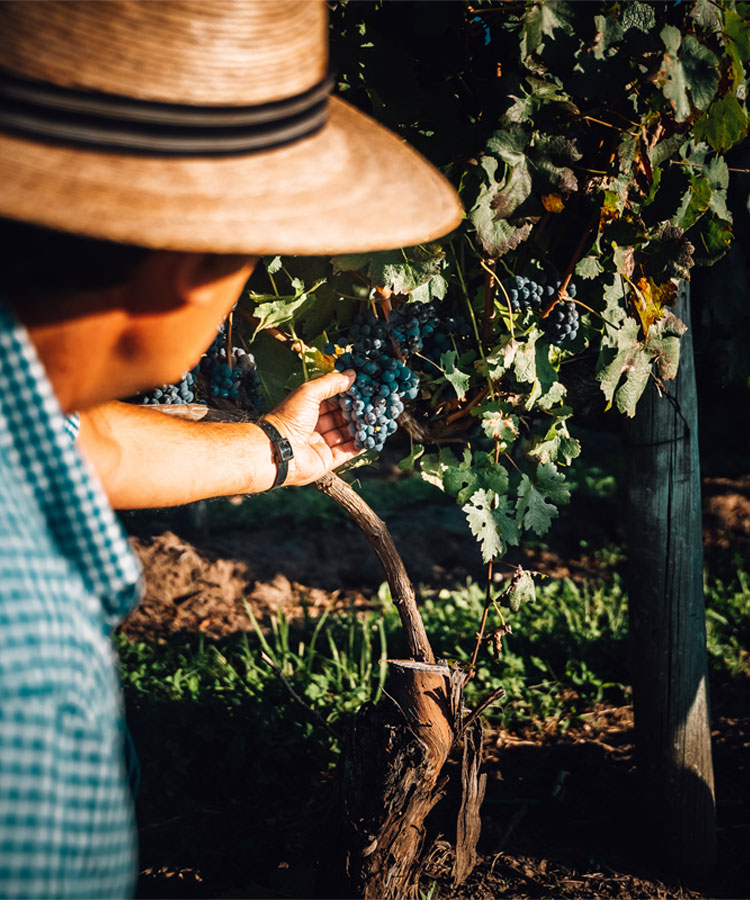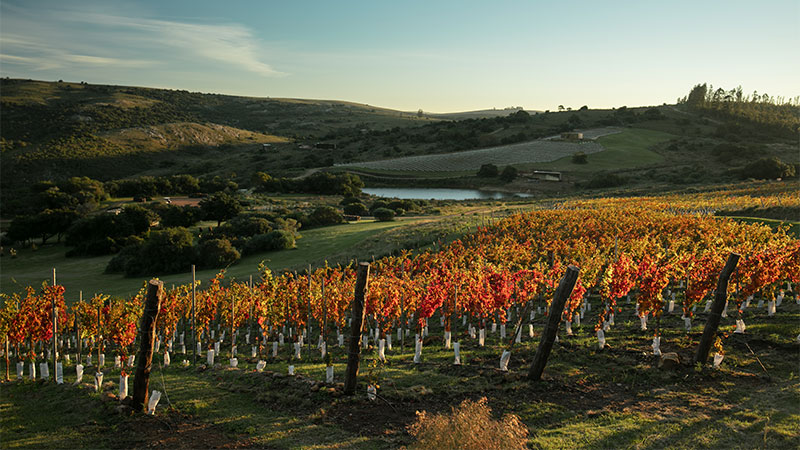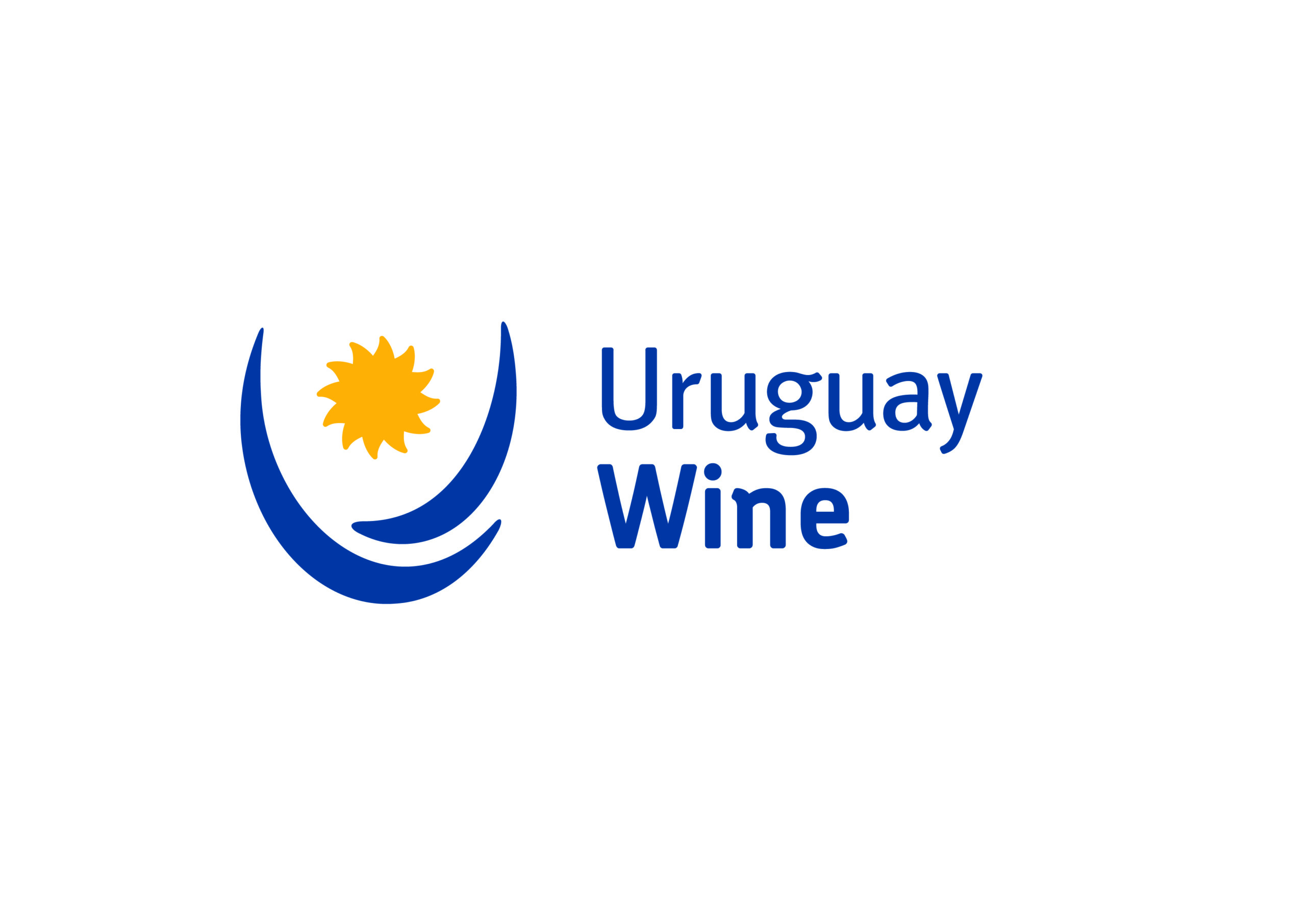When South American wines come to mind, Argentina’s bold Malbec or Chile’s refined Carménère often take the spotlight. But there’s more to the continent’s vino culture than these famed exports. Tucked between its larger neighbors, Uruguay offers a compelling and often overlooked wine scene with a storied heritage.
Uruguay, South America’s second-smallest country, shines for its strong agricultural sector, organic farming practices, and deep commitment to sustainability — over 90% of its electricity comes from renewable sources and about 50% of vineyards are certified sustainable. Life here moves at a relaxed pace with the spirit of tranquilidad, and wine is woven into the everyday rhythm. Here, wine is grounded in authenticity, humility, respect for nature, and a strong human connection.
Uruguay the Unexpected
Unlike its more arid neighbors, this coastal country benefits from a maritime influence that supports a diverse range of grapes and yields balanced, fresh wines. 80+ varieties thrive across the tightly knit country, with a diversity of microregions from the coastline to the warmer inland areas. Though roughly less than half the size of Napa, Uruguay’s wine country is prolific, and now ranks as South America’s fourth-largest wine producer.
Uruguay’s climate, with defined seasons, is often likened to Bordeaux’s, shaped by the cooling Atlantic virazón breeze and nearby estuaries and rivers. The long coastline tempers the heat, while the open, mountain-free landscape invites strong winds that sculpt the land’s gentle, rolling plains. Of its six wine regions — Northern, Northern Riverside, Southern Riverside, Metropolitan, Central and Oceanic —plantings are concentrated in the southern departments of Montevideo, Canelones, San José and Maldonado and Colonia, which make up 95% of all vineyards. Here, growing fields thrive in deep, fertile soils, where pockets of clay-rich, calcareous earth and pink granite add unique character to the vines, and the influence of water, from the Río de la Plata and Atlantic Ocean, is palpable.
Uruguay boasts more than 160 wineries, 90% are family-owned – many of which have roots tracing back to the country’s earliest grape growers. Of the 14,472 acres under vine, over 13,000 acres of those vineyards are family-owned. In the late 20th century, a group of producers created a demarcation to support a fine wine movement — one that focused less on volume and more on soul: Vino de Calidad Preferente (VCP), which denotes wines made exclusively from vitis vinifera grapes. Delightful, approachable wines that often feature local grape varieties as well as rosés, are sold as Vino Común.
Tannat, The Hero Grape
Uruguay’s modern wine industry began in the late 19th century with the planting of Tannat, which was brought over by Pascual Harriague. Well-suited to Uruguay’s varied climates, Tannat’s thick skin helps it withstand the region’s high humidity and rainfall. Uruguay’s nearly 100 soil types also contribute to the diverse styles in which Tannat is cultivated. Today, Uruguay has the world’s largest Tannat vineyard surface, and it accounts for over a quarter of the nation’s wine production, both dry and sweet wines.
Known for its bold and tannic character (reflected even in its name), Tannat has recently inspired winemakers to explore new techniques such as pre-fermentation cold maceration, co-fermentation with other varieties, micro-oxygenation, and even carbonic maceration, which is often used to produce Beaujolais. These approaches have helped craft versatile and subtle expressions. Whether you prefer a classic Tannat or a creative contemporary style, the wine pairs exceptionally well with grilled meats, hearty stews, rich cheeses, and balsamic-glazed vegetables. Tannat rosé, with its bright notes of tangy berries, orchard apple, and hints of citrus, complements pasta dishes and fresh seafood beautifully.
Tannat also boasts the highest levels of polyphenols and resveratrol of any grape worldwide, along with elevated anthocyanins, the antioxidants known for anti-inflammatory benefits, which may also contribute to the invigorating finish of many of the wines made from it.
Get To Know the Local Flavors
Not to be overshadowed by the mighty Tannat, Moscatel de Hamburgo — also known as Muscat Hamburg, blanc de noir, or Black Muscat — is Uruguay’s second-most-planted grape. Valued for its rich flavor and aromatic qualities, it is often used in bulk wine production as well as in crafting sweet wines and light, refreshing rosés, both celebrated for their exuberant floral and fruity character.
In Uruguay, Merlot is often blended with Tannat to soften its robust tannins, creating rounded, medium-bodied reds. These wines typically showcase flavors of berries, a hint of herbs, and slight earthiness. With its softer tannins and balanced acidity, these blends are approachable and versatile, pairing effortlessly with dishes like paella, fruit tarts, and grilled steak.
Cabernet Sauvignon, the classic Bordeaux grape known for its full-bodied richness, adds structure and depth to Uruguayan wines. Cultivated across the country, it offers dark fruit flavors complemented by firm tannins, herbaceousness, and subtle oaky spice. Often blended with Tannat or Merlot, these wines achieve a harmonious balance and a lingering, elegant, slightly earthy finish. They are a worthy companion for grilled or roasted red meats, dishes with smoked paprika or peppercorns, fresh gouda, or mushroom risotto.
Sauvignon Blanc flourishes in Uruguay’s coastal vineyards, yielding crisp, dry wines bursting with vibrant acidity and expressive aromatics. Bright citrus, crisp apple, and fresh herbaceous notes define its lively, refreshing character and make it ideal for pairing with oysters, light poultry entrees, and Asian cuisine prepared with lemongrass or fresh ginger.
Albariño, a grape native to Galicia, Spain, has flourished in Uruguay’s coastal vineyards. Known for producing subtly aromatic wines with vibrant acidity, it offers bright flavors of stone fruit, citrus, and delicate florals. Its fresh characteristics and natural salinity make it an ideal companion for shrimp cocktail, hearty salads, and pesto pasta dishes.
Viognier is gaining popularity among Uruguayan winemakers for its ability to thrive in diverse terroirs, and their interest in crafting white wines that balance expressive fruitiness with fresh acidity and add complexity to the country’s offerings.
Known for producing fruity, full-bodied white wines, Viognier brings rich flavors of stone fruit, complemented by floral and spicy notes. Try pairing them with roasted duck, goat cheese and beet salad, or a sumptuous fruit tart.
Atlantic Breezes in a Bottle
Whether you’re pouring a complex Tannat at a dinner party or a crisp Albariño for a casual gathering, chances are some guests will be tasting Uruguay Wine — value-driven, expressive bottlings which capture the essence of their unique vineyards — for the first time. So, raise a glass and let them in on why Uruguay is South America’s best-kept wine secret.
This article is sponsored by Uruguay Wine.



